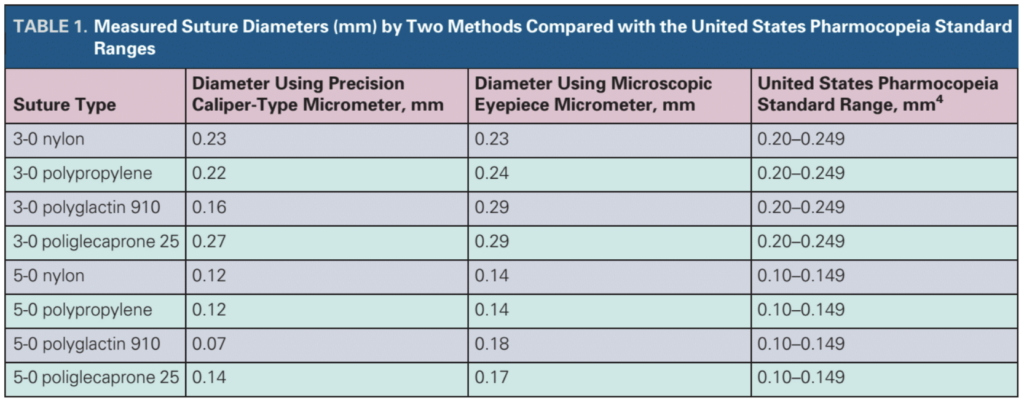
Dr. Mike Publishes Study on Suture Material Selection to Reduce Skin Cancer Scars
A suture is a stitch or row of stitches holding together the edges of a wound or surgical incision. Sutures can tear through tissue, but little data exists on the relative ability of different suture gauges and suture types to cut into the skin. Waccamaw Dermatology’s Mohs surgeons devote 100% of their time to skin surgery, and were adamant to reduce track marks and scars involved with sutures. Dr. Mike, an expert on suture material dynamics, examines the correlation of suture diameter with its ability to cut through an artificial skin model in an effort to reduce skin cancer scars with the proper suture selection.
Methods and Materials
When the stitching skin wound edges together, the percutaneous suture is looped through the epidermis and dermis on each side and then knotted. If the knot is tied too tightly or if subsequent wound swelling occurs, the suture can cut into the epidermis. This epidermal cutting can leave small scars and perhaps suture track marks. Proper suture selection is very important for good cosmetic outcomes and to prevent track marks, scars, or skin cancer scars. The following suture materials were analyzed: 3-0 and 5-0 polypropylene (Prolene; Ethicon, NY), 3-0 and 5-0 polyglactin 910 (Vicryl; Ethicon), 3-0 and 5-0 nylon(Ethilon; Ethicon), and 3-0 and 5-0 poliglecaprone 25(Monocryl; Ethicon.) Each suture method and gauge’s diameter was measured with two methods: precision caliper micrometer and an eyepiece micrometer with the microscope. Suture diameter is correlated with its ability to cut through the skin. The smaller the suture diameter, the more likely it is that a given suture will cut into tissue.
Conclusion
Dr. Mike concluded that all 5-0 suture types required less force to cut into and tear through the skin substitute than their 3-0 counter-parts. Among each suture gauge, there was no significant difference in tear-through force regardless of the suture type. Compared with larger gauge sutures, smaller gauge sutures more easily cut into and tear through the skin substitute, reducing skin cancer scars, as evidenced in the table below.

Read the full study by downloading it through the button below.
Featured
- What is Contact Dermatitis?
Jul 18, 2024
- June is Acne Awareness Month
May 31, 2024
- Benefits of Individualized Skin Cancer Treatment
May 7, 2024
- Busting Myths About Fillers and Injectables
Apr 18, 2024
- Keep Retinol in Your Winter Skincare Routine – Waccamaw Dermatology Skin Institute
Jan 12, 2024
- Waccamaw Dermatology Skin Institute Holiday Gift Guide
Dec 13, 2023
- Our Not-So-Secret Summer Skincare Tips
Jul 11, 2023
- Spring Skincare Tips to Restore Your Skin
Mar 21, 2023
- Six Undeniable Benefits of Botox
Mar 1, 2023
- Skincare Trends: Turning Skincare into Self-Care
Feb 9, 2023